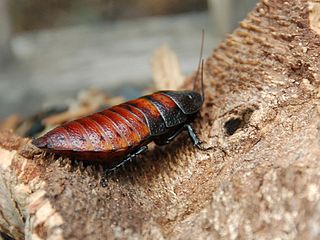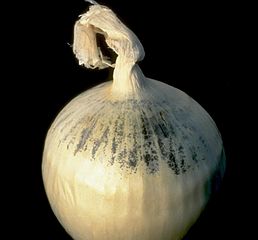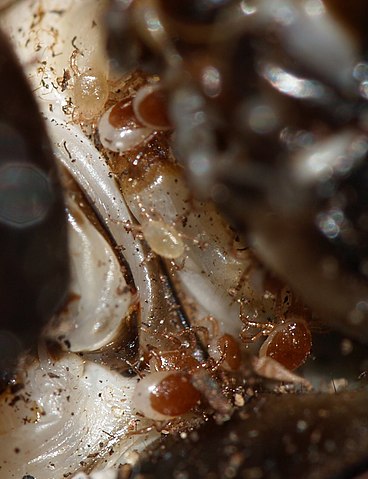Madagascar Hissing Cockroaches (Grompadorhina portentosa) are extremely popular as pets, classroom animals and reptile food. Recent studies at Ohio State University have revealed a darker side to these otherwise harmless insects…their bodies and wastes are colonized by 14 mold species, several of which can cause allergic reactions and secondary infections. I’ve worked with huge colonies of these and other feeder insects in zoos, and coworkers seem to have developed allergies to crickets, but I have not heard of similar reports concerning roaches. As of now, precautions rather than outright avoidance of Hissing Roaches are being advised.
Allergic Reactions and Secondary Infections
The study, published in the March, 2014 issue of the journal Mycoses (V. 57, N. 3), examined Hissing Roach colonies in schools, zoos, homes, and pet stores. Molds of various species were found on shed skins, feces and the bodies of live insects. Several of the molds are capable of triggering allergic reactions such as skin and eye irritation, wheezing and nasal congestion; sensitive individuals could be at additional risk. Aspergillus niger, which is commonly associated with contaminated foods, was especially numerous (see photo). People are impacted mainly via mold spores that land on the skin or are inhaled.
Several of the molds found on Hissing Roaches can also cause secondary infections in wounds or the lungs.
At present, researchers advise those working with Hissing Roaches to wash their hands after contact with the insects. I would suggest that, as with all pets, a doctor should be consulted if you have concerns, or suspect that you or a household member may be at risk.
Hissing Cockroach Care Tips
Molds are fungi that thrive in moist environments. In order to help lower your roach enclosure’s humidity level, I recommend that cricket gel cubes be used as a water source; please see this article for further information. Gel tubes eliminate the need for damp sponges and water bowls, and also prevent nymphs from drowning. Fruit, which is also an important source of water and nutrients, should be replaced regularly to prevent spoilage and mold.
Regular cleaning of the terrarium and replacement of cardboard sheltering sites (if used) is important; Zoo Med’s Wipeout Terrarium Cleaner or a solution of 1 oz. of bleach per gallon of water can be empoloyed. I keep Madagascar Hissing Roach colonies in bare-bottomed tanks; substrate is not necessary, and it complicates cleaning. This type of housing also enables one to maintain a dry environment, which should, in theory, assist in mold control (I’ve not checked into exactly how much moisture the roach-associated molds require…any insights appreciated).
Mites to the Rescue
Researchers are now studying a type of mite (Gromphadorholaelaps schafeiri, see photo) that commonly lives on and around Hissing Roaches. By consuming organic debris, these mites may help to limit mold growth. Many scorpion, millipede and tarantula owners are familiar with other tiny white mites that often establish themselves in invertebrate terrariums. Although disconcerting when first seen, most are harmless or perhaps even useful…please see the article linked below for information about their habits and tips on mite control.
Other Roaches
Whether you keep them as pets or a reptile food-source, roaches are a most fascinating group of insects. Their fossil record stretches back over 300 million years, and 4,000+ species have been described to date. Latin America’s Megaloblatta baberoides sports a 7 inch wingspan while the heaviest, Macropameothia rhinoceros of Australia, weighs in at 1 ½ ounces. Among the most interesting new discoveries is an African cockroach that resembles and behaves like a grasshopper.
The Orange-Spotted Guyana Roach (Blaptica dubia) has much to recommend it as both a food animal and terrarium subject. Please see the article linked below to read more about its natural history and care.
Further Reading
 That Reptile Blog – Reptile, Amphibian and Exotic Pet Care and Information
That Reptile Blog – Reptile, Amphibian and Exotic Pet Care and Information





Great bit of information, but seems to focus on hisser roaches (or target them), when they in fact have these symbiotic mites that keep the food sources for fungal infections down. I would love to hear how often these fungus spp described are found living on surrounding plant containers and other roach species to put it into perspective.
Also, something they really should be studying, is how the roaches manage to survive if in fact a deadly strain like Aspergillus niger is living on/around them.
Hello,
I’ve not seen related research re other species, but will update when [possible. best, frank